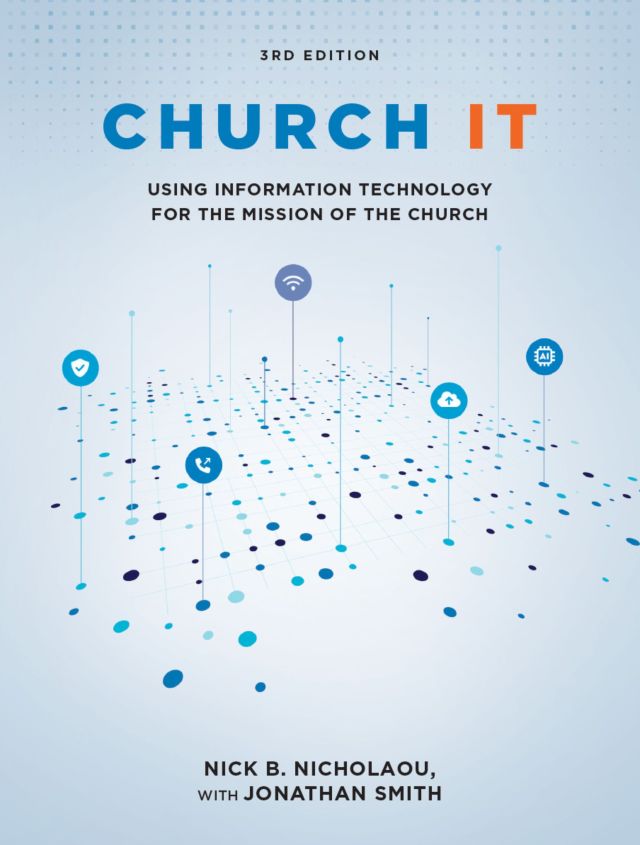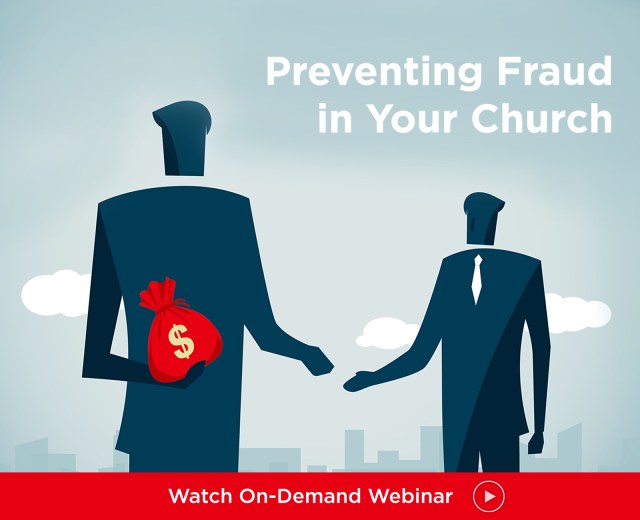Mass shooting preparation is top-of-mind for many faith leaders nationwide.
But has this anxiousness unintentionally overshadowed other, more common risks confronting churches? The statistical probabilities of a mass shooting at a church remain remarkably low. By contrast, the chances of an abuse allegation or personal injury claim are much higher.
Editor’s Note: This article is part of the Advantage Membership. Learn more on how to become an Advantage Member or upgrade your membership.
“The likelihood (of a shooting) is extremely rare,” said Kevin Robertson, a former law enforcement officer who heads security for Saddleback Church and its multiple locations throughout Southern California.
Yet experts like Robertson still note the threat of gun violence against churches cannot be ignored, either. “Don’t bury your heads in the sand,” he tells churches. “But don’t micro-focus on it, either.”
Troubling events
The desire to “micro-focus” is understandable. Shootings generating widespread media attention have hit schools, retailers, music concerts, and movie theaters in recent years, not to mention faith communities. For instance:
- A man fueled by a hatred of Christians launched separate attacks on the New Life Church in Colorado Springs, and a Youth With a Mission (YWAM) training center in suburban Denver (5 killed, 5 injured).
- A man driven by racial hatred opened fire at Emanuel African Methodist Episcopal Church in Charleston, South Carolina (9 killed, 2 wounded).
- A man motivated by a “domestic situation” stormed the First Baptist Church of Sutherland Springs in Texas (26 killed, 20 hurt).
- A man reportedly expressing a desire to “kill Jews” attacked the Tree of Life synagogue in Pittsburgh (11 killed, 6 injured).
The ripple effects from these acts of violence have been felt. Attorney and ChurchLawAndTax.com senior editor Richard Hammar said one large church insurer’s general counsel recently told him the top question his legal department receives from churches each year pertains to active shooters and armed security.
On a larger scale, uneasiness is visibly evident—as demonstrated by two separate, nationwide polls, conducted in the spring of 2019, that were focused on church security and shootings. In one, 12 percent of the 2,001 adults polled said they did not feel safe in a house of worship, and their top concern was an armed intruder. In the other, which surveyed an undisclosed number of evangelical Christian leaders, 71 percent said they increased security at worship services in recent years due to mass shootings.
These events, combined with these sentiments, undoubtedly prompted this provocative headline in the October 2019 issue of Christianity Today magazine: “Armed Security at Churches Is Becoming a New Normal.” (Christianity Today is a sister publication of Church Law & Tax.)
Sorting through the statistics
Statistically speaking, though, the likelihood of an active shooter—or any violent activity—on church property is unquestionably the exception, not the rule.
There are an estimated 350,000 houses of worship in the United States. Based on Robertson’s detailed tracking, only 121 church shootings have occurred nationwide since 1999, 80 of which took place during a church service or event.
Carl Chinn, who helped develop New Life’s security program and was at the church the day it was attacked, has tracked violent incidents since 1999 as well. Chinn casts his net wider, both incorporating the properties of parachurch ministries and religiously affiliated schools and including all types of violent incidents, not just ones involving guns. While the numbers in his report continue to grow each year, the annual total typically remains fewer than 250.
Some of those situations occur during church functions, but many happen on church properties when the church is closed. Domestic violence has been the leading cause of an incident, Chinn noted.
Churches still should be aware of the threat of an active shooter, said Chinn, who leads the Faith Based Security Network and consults with churches across the country. “Just because those life-taking events are low probability, we also have to keep in mind they are still high impact,” he said. “But we should keep it in check. We should focus on the things most likely to happen.”
Basic safety as a ministry
Troubling to both Robertson and Chinn are the number of churches that inquire about shooting prevention and armed security training, only to reveal they have no basic safety or risk management efforts underway at all. Robertson, who fields half-a-dozen inquiries a week from church leaders nationwide, estimates about three-fourths “don’t have anything in place.”
That’s problematic because church safety basics are foundational to solving more complex and challenging situations like a violent threat. Chinn said New Life’s efforts to develop a comprehensive safety ministry likely saved lives, even though a handful of deaths still occurred. “Because we were good at the smaller things, we were better at responding to true evil,” he said.
Robertson, whose security books follow a “crawl-walk-run” model, puts it this way:
I encourage [churches] not to micro-focus on the active shooter, but to micro-focus on what’s more likely. What are you going to do if you have a medical issue? What are you going to do if you have a verbal disruption? What are you going to do if you have a noncustodial parent show up? Those are the ones that are more likely to happen. Those are the ones to micro-focus on.
Robertson sees safety as a ministry. The starting point is to build a team of people primarily committed to helping others, and avoid using the terms “security” or “security guards.” This posture often helps draw support from the senior pastor and church board, Robertson added, and creates long-term buy-in. When Robertson personally interviewed volunteers and staff members for Saddleback’s team, he said his first question was whether the person was comfortable praying with an attender. “It’s a ministry. It’s no different than ushers or greeters,” Robertson added.
Chinn agreed, describing the initial process as a “start-with-what-you-have” philosophy. New Life intentionally called its program the “Life Safety Ministry,” and sought “people serving on that team because of a compassion for their fellow man, not because of the sensationalism associated with the word ‘security,’” he said.
But also note: 41 states regulate the security operations of private parties—and that’s true whether or not the team members of those operations will be armed, Chinn said. Many local jurisdictions, like the city of Denver, do the same. Churches must be aware of these local and state laws and the requirements they must keep to maintain compliance for any team they assemble, he said.
“Keep it simple”
Once a team is established, Chinn said churches should avoid the temptation to rapidly expand policies and procedures. “So many of those inclined to start or head up a security program for their church make it too complicated at first,” Chinn said. Among his 10 standards for starting or improving security (see “10 Standards for Starting a Program”), he emphasizes No. 4 in particular: “Keep it simple.”
As far as first priorities, Robertson said child safety ranks first (if a church has only one volunteer interested to help with safety, he said he advises that church to place the person in the children’s ministry). Second is medical emergencies, followed by responding to verbal disruptions. (Added Chinn: “Our lips are what keeps much of the evil at bay. Whether it’s a violent act about to occur or an obnoxious one, we’ve got to get better at de-escalation training.”)
Leaders also should consult with their insurance agents for resources and to ensure those agents know the steps and measures the church plans to take, Robertson said.
Additional simple steps include securing building doors (the YWAM attack was likely minimized because doors properly latched and locked) and posting at least one person to watch the church parking lot and lobby during services (most attacks start outside the building), Chinn said.
In time, the conversation about active-shooter situations will emerge—as they should, Chinn and Robertson said. Leaders again should contact their insurance agents for possible resources and guidance. Local law enforcement agencies often want to connect with churches about prevention and response plans, and frequently provide low- or no-cost training workshops. Additionally, attorney Richard Hammar recommends hiring off-duty law enforcement if a church decides to implement armed security.
If a church decides to use outside help beyond law enforcement, and considers using security consultants (which have proliferated in number over the past decade), it should look for options that “truly understand the environment of faith-based places,” Chinn said. “Look for someone who has served in churches for years, understands the culture, and has the heart and experience of a protector.”
Require referrals from other churches they have served. Research their standing in the business community, too, he added.
Above all, remember that active-shooter prevention and response is a “run” step on the crawl-walk-run spectrum, Robertson said. Get started with crawl steps that simply focus on physically protecting the church and minimizing legal liability.
“Churches need to build up a foundation first,” he said.
Related resources
Kevin Robertson provides local churches nationwide with about a dozen types of documents, including sample policies and procedures, a sample safety team member application, and a manual covering how to use force when necessary during an escalated situation. Church Law & Tax Advantage Members are encouraged to contact Robertson about these documents, available for free, at kevinr@saddleback.com.
Advantage Members have access to the following on ChurchLawAndTax.com:
- “5 Steps for Building a Volunteer Safety and Security Team”
- “Responding to Gun Violence Concerns at Church”
- “Stopping a Shooter” and “Developing an Emergency Operations Plan”
- “Drawing the Line on Danger” (including tips for de-escalating disruptive individuals)
- “Minimizing the Risks of Child Molestation in Churches”
- “The Legal and Moral Case for a Defibrillator”
Advantage Members also receive a 20-percent discount on these resources when they log into ChurchLawAndTaxStore.com using their email address:





